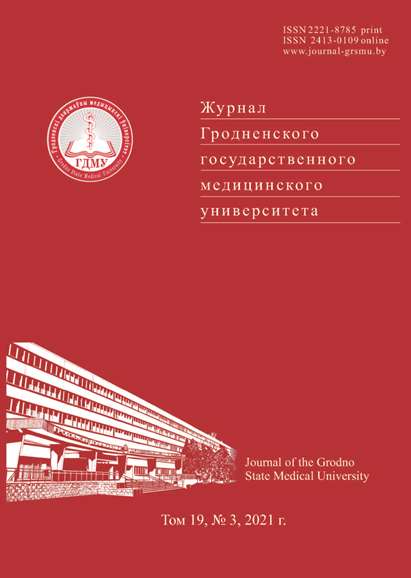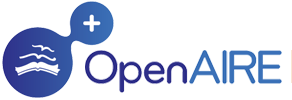ПАТОГЕНЕТИЧЕСКИЕ МЕХАНИЗМЫ ФОРМИРОВАНИЯ ГЕНЕТИЧЕСКОЙ УСТОЙЧИВОСТИ К АНТИБИОТИКАМ ПРИ ЛЕЧЕНИИ ТЯЖЕЛЫХ ИНФЕКЦИЙ В ИНТЕНСИВНОЙ ТЕРАПИИ
Аннотация
Введение. Высокий рост применения антибиотиков в отделениях интенсивной терапии вызывает серьезную обеспокоенность для общественного здравоохранения. Широкое использование антибактериальных препаратов – основной фактор устойчивости патогенных микроорганизмов к антибиотикам. Рост числа устойчивых бактериальных штаммов в значительной степени вызван образованием новых вариантов генов устойчивости.
Цель. Провести анализ результатов научных исследований, подтверждающих ключевую роль генетической устойчивости бактерий в механизмах развития антибиотикорезистентности.
Материал и методы. Проведен качественный анализ русскоязычных и англоязычных литературных источников, затрагивающих аспекты генетической резистентности микроорганизмов.
Результаты. Установлено, что антибиотикорезистентность у бактерий, достигнутая с помощью мутаций хромосомной ДНК, ведет к значительному росту числа микроорганизмов с множественной лекарственной устойчивостью, которые становятся нечувствительными к терапии антибиотиками.
Выводы. Растущая распространенность мультирезистентных патогенов представляет собой актуальную проблему для медицины. Генетические механизмы, лежащие в основе бактериальной устойчивости, – ключевой момент антибиотикорезистентности. Ежегодные исследования значительно расширяют знания об известных и предположительно новых генах устойчивости, их мобильности и истории эволюции.
Литература
Paterson DL. Restrictive antibiotic policies are appropriate in intensive care units. Crit Care Med. 2003;31(1):8-25. https://doi.org/10.1097/00003246-200301001-00004
Remschmidt C, Schneider S, Meyer E, Schroeren-Boersch B, Gastmeier P, Schwab F. Surveillance of Antibiotic Use and Resistance in Intensive Care Units (SARI). Dtsch Arztebl Int. 2017;114(50):858-865. https://doi.org/10.3238/arztebl.2017.0858
Klein EY, Van Boeckel TP, Martinez EM, Pant S, Gandra S, Levin SA, Goossens H, Laxminarayan R. Global increase and geographic convergence in antibiotic consumption between 2000 and 2015. Proc Natl Acad Sci U S A. 2018;115(15):E3463-E3470. https://doi.org/10.1073/pnas.1717295115
McDermott PF, Walker RD, White DG. Antimicrobials: modes of action and mechanisms of resistance. Int J Toxicol. 2003;22(2):135-43. https://doi.org/10.1080/10915810305089
Maiden MC. Horizontal genetic exchange, evolution, and spread of antibiotic resistance in bacteria. Clin Infect Dis. 1998;27(Suppl 1):12-20. https://doi.org/10.1086/514917
Ochman H, Lawrence JG, Groisman EA. Lateral gene transfer and the nature of bacterial innovation. Nature. 2000;18;405(6784):299-304. https://doi.org/10.1038/35012500
Munro N. Antimicrobial Resistance: Thinking Outside the Box. AACN Adv Crit Care. 2015;26(3):225-30. https://doi.org/10.1097/NCI.0000000000000102
Yang Y, Xu C, Cao X, Lin H, Wang J. Antibiotic resistance genes in surface water of eutrophic urban lakes are related to heavy metals, antibiotics, lake morphology and anthropic impact. Ecotoxicology. 2017;26(6):831-840. https://doi.org/10.1007/s10646-017-1814-3
Leclercq R, Derlot E, Duval J, Courvalin P. Plasmidmediated resistance to vancomycin and teicoplanin in Enterococcus faecium. N Engl J Med. 1988;319(3):157-61. https://doi.org/10.1056/NEJM198807213190307
Reynolds PE, Courvalin P. Vancomycin resistance in enterococci due to synthesis of precursors terminating in D-alanyl-D-serine. Antimicrob Agents Chemother. 2005;49(1):21-5. https://doi.org/10.1128/AAC.49.1.21-25.2005
Arthur M, Depardieu F, Reynolds P, Courvalin P. Quantitative analysis of the metabolism of soluble cytoplasmic peptidoglycan precursors of glycopeptide-resistant enterococci. Mol Microbiol. 1996;21(1):33-44. https://doi.org/10.1046/j.1365-2958.1996.00617.x
Depardieu F, Reynolds PE, Courvalin P. VanD-type vancomycin-resistant Enterococcus faecium 10/96A. Antimicrob Agents Chemother. 2003;47(1):7-18. https://doi.org/10.1128/AAC.47.1.7-18.2003
Reynolds PE, Courvalin P. Vancomycin resistance in enterococci due to synthesis of precursors terminating in D-alanyl-D-serineю. Antimicrob Agents Chemother. 2005;49(1):21-25. https://doi.org/10.1128/AAC.49.1.21-25.2005
Murray IA, Shaw WV. O-Acetyltransferases for chloramphenicol and other natural products. Antimicrob Agents Chemother. 1997;41(1):1-6. https://doi.org/10.1128/AAC.41.1.1
Long KS, Poehlsgaard J, Kehrenberg C, Schwarz S, Vester B. The Cfr rRNA methyltransferase confers resistance to Phenicols, Lincosamides, Oxazolidinones, Pleuromutilins, and Streptogramin A antibiotics. Antimicrob Agents Chemother. 2006;50(7):2500-2505. https://doi.org/10.1128/AAC.00131-06
Lang KS, Anderson JM, Schwarz S, Williamson L, Handelsman J, Singer RS. Novel florfenicol and chloramphenicol resistance gene discovered in Alaskan soil by using functional metagenomics. Appl Environ Microbiol. 2010;76(15):5321-5326. https://doi.org/10.1128/AEM.00323-10
Kehrenberg C, Schwarz S. Florfenicol-chloramphenicol exporter gene fexA is part of the novel transposon Tn558. Antimicrob Agents Chemother. 2005;49(2): 813-5. https://doi.org/10.1128/AAC.49.2.813-815.2005
Liu H, Wang Y, Wu C, Schwarz S, Shen Z, Jeon B, Ding S, Zhang Q, Shen J. A novel phenicol exporter gene, fexB, found in enterococci of animal origin. J Antimicrob Chemother. 2012;67(2):322-5. https://doi.org/10.1093/jac/dkr481
Wang Y, Lv Y, Cai J, Schwarz S, Cui L, Hu Z, Zhang R, Li J, Zhao Q, He T, Wang D, Wang Z, Shen Y, Li Y, Feßler AT, Wu C, Yu H, Deng X, Xia X, Shen J. A novel gene, optrA, that confers transferable resistance to oxazolidinones and phenicols and its presence in Enterococcus faecalis and Enterococcus faecium of human and animal origin. J Antimicrob Chemother. 2015;70(8):2182-90. https://doi.org/10.1093/jac/dkv116
Egan SA, Shore AC, O'Connell B, Brennan GI, Coleman DC. Linezolid resistance in Enterococcus faecium and Enterococcus faecalis from hospitalized patients in Ireland: high prevalence of the MDR genes optrA and poxtA in isolates with diverse genetic backgrounds. J Antimicrob Chemother. 2020;75(7):1704-1711. https://doi.org/10.1093/jac/dkaa075
Bergen PJ, Landersdorfer CB, Lee HJ, Li J, Nation RL.'Old' antibiotics for emerging multidrug-resistant bacteria. Curr. Opin. Infect Dis. 2012;25(6):626-33. https://doi.org/10.1097/QCO.0b013e328358afe5
Olaitan AO, Morand S, Rolain J. M. Mechanisms of polymyxin resistance: acquired and intrinsic resistance in bacteria. Front Microbiol. 2014;5:643. https://doi.org/10.3389/fmicb.2014.00643
Cannatelli A, D'Andrea MM, Giani T, Di Pilato V, Arena F, Ambretti S, Gaibani P, Rossolini GM. In vivo emergence of colistin resistance in Klebsiella pneumoniae producing KPC-type carbapenemases mediated by insertional inactivation of the PhoQ/PhoP mgrB regulator. Antimicrob Agents Chemother. 2013;57(11):5521-6. https://doi.org/10.1128/AAC.01480-13
Jayol A, Poirel L, Brink A, Villegas MV, Yilmaz M, Nordmann P. Resistance to colistin associated with a single amino acid change in protein PmrB among Klebsiella pneumoniae isolates of worldwide origin. Antimicrob Agents Chemother. 2014;58(8):4762-6. https://doi.org/10.1128/AAC.00084-14
Jayol A, Nordmann P, Brink A, Poirel L. Heteroresistance to colistin in Klebsiella pneumoniae associated with alterations in the PhoPQ regulatory system. Antimicrob Agents Chemother. 2015;59(5):2780-4. https://doi.org/10.1128/AAC.05055-14
Giordano C, Barnini S, Tsioutis C, Chlebowicz MA, Scoulica EV, Gikas A, Rossen JW, Friedrich AW, Bathoorn E. Expansion of KPC-producing Klebsiella pneumoniae with various mgrB mutations giving rise to colistin resistance: the role of ISL3 on plasmids. Int J Antimicrob Agents. 2018;51(2):260-265. https://doi.org/10.1016/j.ijantimicag.2017.10.011
Liu YY, Wang Y, Walsh TR, Yi LX, Zhang R, Spencer J, Doi Y, Tian G, Dong B, Huang X, Yu LF, Gu D, Ren H, Chen X, Lv L, He D, Zhou H, Liang Z, Liu JH, Shen J. Emergence of plasmid-mediated colistin resistance mechanism MCR-1 in animals and human beings in China: a microbiological and molecular biological study. Lancet Infect Dis. 2016;16(2):161-8. https://doi.org/10.1016/S1473-3099(15)00424-7
da Silva KE, Thi Nguyen TN, Boinett CJ, Baker S, Simionatto S. Molecular and epidemiological surveillance of polymyxin-resistant Klebsiella pneumoniae strains isolated from Brazil with multiple mgrB gene mutations. Int J Med Microbiol. 2020;310(7):151448. https://doi.org/10.1016/j.ijmm.2020.151448
Wachino J, Arakawa Y. Exogenously acquired 16S rRNA methyltransferases found in aminoglycoside-resistant pathogenic Gram-negative bacteria: an update. Drug Resist Updat. 2012;15(3):133-48. https://doi.org/10.1016/j.drup.2012.05.001
Galimand M, Courvalin P, Lambert T. Plasmidmediated high-level resistance to aminoglycosides in Enterobacteriaceae due to 16S rRNA methylation. Antimicrob Agents Chemother. 2003;47(8):2565-71. https://doi.org/10.1128/AAC.47.8.2565-2571.2003
Galimand M, Courvalin P, Lambert T. RmtF, a new member of the aminoglycoside resistance 16S rRNA N7 G1405 methyltransferase family. Antimicrob Agents Chemother. 2012;56(7):3960-2. https://doi.org/10.1128/AAC.00660-12
Costello SE, Deshpande LM, Davis AP, Mendes RE, Castanheira M. Aminoglycoside-modifying enzyme and 16S ribosomal RNA methyltransferase genes among a global collection of Gram-negative isolates. J Glob Antimicrob Resist. 2019;16:278-285. https://doi.org/10.1016/j.jgar.2018.10.020
Levy SB, McMurry LM, Barbosa TM, Burdett V, Courvalin P, Hillen W, Roberts MC, Rood JI, Taylor DE. Nomenclature for new tetracycline resistance determinants. Antimicrob Agents Chemother. 1999;43(6):1523-4. https://doi.org/10.1128/AAC.43.6.1523
Chopra I, Roberts M. Tetracycline antibiotics: mode of action, applications, molecular biology, and epidemiology of bacterial resistance. Microbiol Mol Biol Rev. 2001;65(2):232-60. https://doi.org/10.1128/MMBR.65.2.232-260.2001
Berglund F, Böhm ME, Martinsson A, Ebmeyer S, Österlund T, Johnning A, Larsson DGJ, Kristiansson E. Comprehensive screening of genomic and metagenomic data reveals a large diversity of tetracycline resistance genes. Microb Genom. 2020;6(11):1-14. https://doi.org/10.1099/mgen.0.000455
Roberts MC. Update on macrolide-lincosamide-streptogramin, ketolide, and oxazolidinone resistance genes. FEMS Microbiol Lett. 2008;282(2):147-59. https://doi.org/10.1111/j.1574-6968.2008.01145.x
Cetin ES, Gunes H, Kaya S, Aridogan BC, Demirci M. Macrolide-lincosamide-streptogramin B resistance phenotypes in clinical staphylococcal isolates. Int J Antimicrob Agents. 2008;31(4):364-8. https://doi.org/10.1016/j.ijantimicag.2007.11.014
Toh SM, Xiong L, Arias CA, Villegas MV, Lolans K, Quinn J, Mankin AS. Acquisition of a natural resistance gene renders a clinical strain of methicillin-resistant Staphylococcus aureus resistant to the synthetic antibiotic linezolid. Mol Microbiol. 2007;64(6):1506-14. https://doi.org/10.1111/j.1365-2958.2007.05744.x
Ong SP, Azam AH, Sasahara T, Miyanaga K, Tanji Y. Characterization of Pseudomonas lytic phages and their application as a cocktail with antibiotics in controlling Pseudomonas aeruginosa. J Biosci Bioeng. 2020;129(6):693-699. https://doi.org/10.1016/j.jbiosc.2020.02.001
Qiao J, Zhu M, Lu Z, Zhao H, Bie X. The antibiotics resistance mechanism and pathogenicity of cold stressed Staphylococcus aureus. LWT. 2020;126:109274. https://doi.org/10.1016/j.lwt.2020.109274
Li X, Zhang B, Huang W, Cantwell C, Chen B. Integration of Fuzzy Matter-Element Method and 3D-QSAR Model for Generation of Environmentally Friendly Quinolone Derivatives. Int J Environ Res Public Health. 2020;17(9):3239. https://doi.org/10.3390/ijerph17093239
Birk SE, Haagensen JAJ, Johansen HK, Molin S, Nielsen LH, Boisen A. Microcontainer Delivery of Antibiotic Improves Treatment of Pseudomonas aeruginosa Biofilms. Adv Healthc Mater. 2020;9(10):1901779. https://doi.org/10.1002/adhm.201901779
Nugrahani I, Tjengal B, Gusdinar T, Horikawa A, Uekusa H. A Comprehensive Study of a New 1.75 Hydrate of Ciprofloxacin Salicylate: SCXRD Structure Determination, Solid Characterization, Water Stability, Solubility, and Dissolution Study. Crystals. 2020;10(5):349. doi: 10.3390/cryst10050349. 44. Kapil S, Kumar T, Sharma V. Mechanism and challenges associated with adaptation and evolution of drug-resistant bacteria: an overview. AsPac J Mol Biol Biotechnol. 2020;28(2):1-18. https://doi.org/10.35118/apjmbb.2020.028.2.01
Majolo F, Bitencourt S, Wissmann Monteiro B, Viegas Haute G, Alves C, Silva J, Pinteus S, Santos RCV, Torquato HFV, Paredes-Gamero EJ, Oliveira JR, De Souza CFV, Pedrosa RFP, Laufer S, Goettert MI. Antimicrobial and antileukemic effects: in vitro activity of Calyptranthes grandifolia aqueous leaf extract. J Toxicol Environ Health A. 2020;83(8):289-301. https://doi.org/10.1080/15287394.2020.1753606
Wheeldon RP, Bernacki DT, Dertinger SD, Bryce SM, Bemis JC, Johnson GE. Benchmark Dose Analysis of DNA Damage Biomarker Responses Provides Compound Potency and Adverse Outcome Pathway Information for the Topoisomerase II Inhibitor Class of Compounds. Environ Mol Mutagen. 202061(4):396-407. https://doi.org/10.1002/em.22360
Bradford PA. Extended-spectrum beta-lactamases in the 21st century: characterization, epidemiology, and detection of this important resistance threat. Clin. Microbiol. Rev. 2001;14(4):933-51. https://doi.org/10.1128/CMR.14.4.933-951.2001
Hakenbeck R, Brückner R, Denapaite D, Maurer P. Molecular mechanisms of β-lactam resistance in Streptococcus pneumoniae. Future Microbiol. 2012;7(3):395-410. https://doi.org/10.2217/fmb.12.2
Bush K, Jacoby GA. Updated functional classification of beta-lactamases. Antimicrob Agents Chemother. 2010;54(3):969-76. https://doi.org/10.1128/AAC.01009-09





























